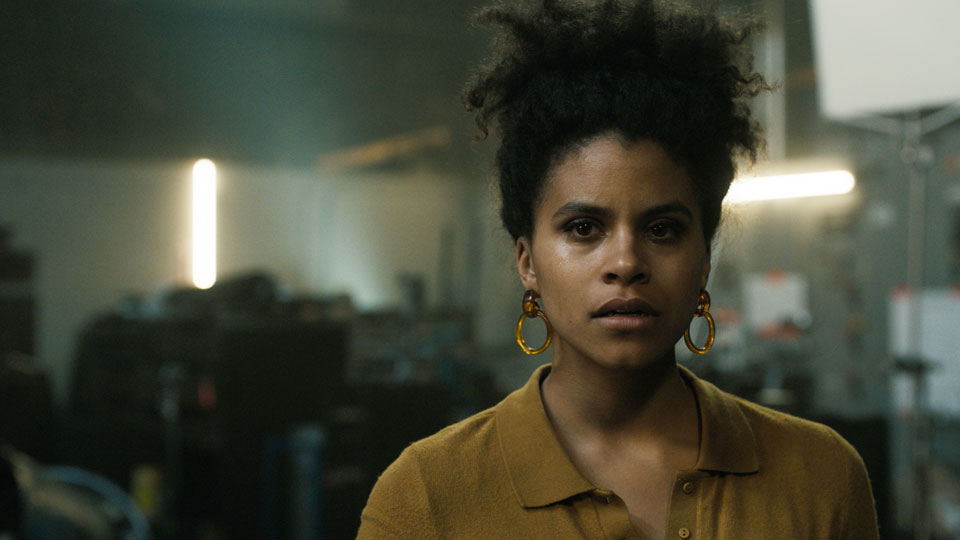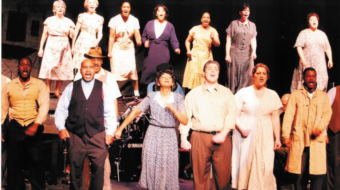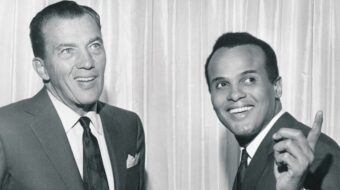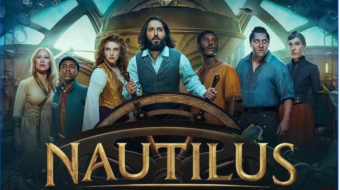
Editor’s note: A review and analysis of Jordan Peele’s “The Twilight Zone” episode ten. Spoilers ahead.
“Did I learn the wrong lesson?”- The Twilight Zone
Jordan Peele’s The Twilight Zone is currently airing weekly on the streaming service CBS All Access. In the tenth and final episode in season one of the reboot, the series closes out on an extreme high with “Blurryman.” This writer would argue that this episode is the best of the season, but only because it builds upon all of the themes and spirit of the episodes that came before it. It serves as a figurative love letter to the original Rod Serling series, a challenge to viewers to embrace the new reality that is this Twilight Zone, while daring us to understand the significance of such storytelling in our current society. It’s an extremely self-aware episode that hits many of the right notes.
The episode stars Zazie Beetz (Atlanta), Betty Gabriel (Get Out), Seth Rogen (Long Shot), and Jordan Peele himself going beyond his usual narrator role. The episode was directed by Simon Kinberg (Dark Phoenix) and written by Alex Rubens (Keanu). The story follows Sophie Gelson, a writer on Jordan Peele’s The Twilight Zone, who is being haunted by a mysterious dark figure on set as she tries to finish writing the opening monologue for the latest episode. From the synopsis alone it’s already clear just how meta “Blurryman” truly is, as the audience is allowed a backstage view of what is really happening in The Twilight Zone on a variety of levels.
At the beginning of the episode, the audience is made to believe it’s watching Seth Rogen play a novelist who is trying to finish his book. Just as he writes the final line – dealing with a nuclear apocalypse – he peers outside with his wife (played by Betty Gabriel) to see that what he wrote has actually come true. Cue Peele stepping into view to give his opening monologue with layered meaning about artistic social responsibility and – wait – no, actually, that doesn’t end up happening. That’s because Peele stops his monologue halfway through to look at the camera people filming the episode to explain that the lines he’s reading just aren’t flowing right for the story. Production is halted and suddenly it’s clear that this is a very different episode of The Twilight Zone.
From there we are introduced to Sophie Gelson, played by Beetz, who is the writer of the episode we were just made to believe we were watching with Rogen. Gelson is an old school Twilight Zone fan, and through her discussion with Peele about revamping the opening narration, we get to understand that in her opinion genre storytelling isn’t really “high level” art, but that at least Rod Serling’s Twilight Zone used it to get important social messages out to a mass audience. Gelson feels that she is following in that tradition through the episode she is writing, by posing the question of art versus entertainment. Peele, playing a self-important version of himself, doesn’t agree, saying art and entertainment don’t have to be posed as an “either-or” scenario. He asks Sophie to rewrite the monologue.
From there is where things go from meta to horror, as Sophie is made aware of a figure that has appeared in every episode of the first season of the reboot without anyone noticing up until now. It is the figure they are calling the Blurryman, as no one can tell what he looks like. Sophie is seemingly stalked by the mysterious figure all over set as she refuses to face it head-on.
Beetz gives a fun performance as the overworked writer who is desperately trying to infuse what she sees as artistic integrity into Hollywood shallowness. Even as she is running away from the mysterious figure, that no one else can see, she’s able to keep her wits about her, even as she feels like she’s descending into madness. This makes for both humorous and chilling moments as she wonders aloud if no matter what she does her fate is to die at the hands of what she thinks is a monster.
What this episode did well was subvert everything we’ve come to expect from a Twilight Zone episode. This subversion is made the most obvious when it comes to the question of the twist that we are so used to having in these stories. This episode doesn’t have just one twist, but many. In a time when viewers can feel desensitized from watching predictable content over and over again, to the point of knowing the ending before the conclusion is reached, this subversion works as a much-needed jolt to the system for those wanting to be surprised for once.
And surprised we are, at least I was, because the mysterious figure is none other than Rod Serling himself. For, you see, the Twilight Zone is actually a real place, a place we are all in to a certain degree, that has multiple truths and viewpoints, and Sophie’s “lesson” was that she needed to open her eyes to truly see the reality she was in, and to embrace the unknown.
A major theme in the episode is the obvious comparison between The Twilight Zone original series and the reboot. The episode addresses the critique that Peele’s reboot has made Twilight Zone more political than it ever was intended to be. Of course, those that make this criticism seem to be operating from an ahistorical viewpoint, as a small internet search alone would reveal that Serling’s original series was deliberately political, as he used his art to advocate for social justice, true democracy, and equality.
What some would complain is Peele leaning too heavy on “identity politics”, which has become a four-letter word and coded language for those that don’t want to address the special exploitation faced by marginalized groups in this country, could be argued was very much what Serling addressed in his series. Albeit he couldn’t hire as many actors and women of color, or display LGBTQ representation in his original due to network censorship of the 1950s, but from his legacy, it can be surmised he would have done so if he could have.
The episode displays that this reboot follows the legacy of the original while adapting it to our current political climate. As the last line in Rod Serling’s closing monologue in “Blurryman” states, it’s “not the end of the story, but a new beginning for the Twilight Zone.” Having a CGI version of Serling appear in the episode, along with giving the closing monologue was bold. It’s a symbolic assertion that Serling would approve of the reboot and that there will be no lessening of the kinds of stories being told in the series any time soon.
The second most prominent theme deals with the role of art and entertainment in our society. At the beginning of the episode, Sophie seems to begrudgingly use horror/sci-fi to tell political stories. By the end of the episode, it is understood that art and entertainment, as the fictional Jordan Peele noted, does not have to be posed against one another. Entertainment can be enlightening, and true art can be entertaining. In fact, the episode seems to argue that by making art entertaining there’s a better chance for important messaging to get to more people willing to see it. This is a truthful statement for, as we know, politics is where the masses are.
The original Twilight Zone series serves as a testament to this notion, as such a bold political show for its time continues to be a mainstream classic. Peele’s own work speaks to this as well, as his extremely popular films US and Get Out use horror to speak to themes such as racism and social homogeneity. The Twilight Zone, US, Get Out, and others similar to them aren’t “next level” horror that should be separated out from the genre, as though they are beyond it, when in reality these works show what can be done when the genre is used to its full potential.
Lastly, as The Twilight Zone is full of multiple meanings and layers, the episode and Serling’s closing monologue serve as a challenge to viewers to face our current world head on.
Throughout the season topics such as racism, social injustice, and government corruption have been taken on. The show has premiered in the Trump era that is riddled with everyday assaults on working people. The episode does a visual recap of those topics covered, while Serling’s closing remarks drives home the message that, “ perhaps our only hope is to face all realities. A multitude of truths matched by the fatal dominate “X”, with no other choice but to embrace it. To open ourselves to the unknown.”
One can argue that the show knows we are in unprecedented times, as political and ecological disaster hang heavily over our heads. Yet, Serling’s words can be seen as a message of hope that since it is unknown, the end is not yet written and that we can embrace this new frontier head on with that optimism – in The Twilight Zone.










